https://www.youtube.com/watch?v=doJ22DCfYDY
Misty Tutorial - the easy way to learn jazz piano

Después uniremos las marcas con líneas rectas formando una cuadrícula como esta .
Seguidamente cortaremos con el Potter .
Nos tienen que quedar sesenta y cuatro piezas cuadradas del mismo tamaño .
Así nos tienen que quedar las piezas .
Una vez recortadas en el siguiente paso volvemos a coger la pieza de cartón que utilizaremos como marco del tablero y lo cambiaremos a un color más claro forrando con el papel marrón .
Para esto cortaremos unas tiras y las pegaremos con el pegamento de barra .
Nos tiene que quedar así .

The tune is written in the key of E Flat Major , and it follows an A AB a form .
The tonality is primarily major throughout , and there is some altered harmony sprinkled in here and there .
So the version that I'm working from can be found on Page 434 of the new real Book one .
Here's the front cover of the new real book one .
If you head over to the resources section of Piano Groove , you can find a link to where you can buy that book online .
So this is one of my favourite jazz standards , so hopefully I'll have some interesting things to share with you .
So before we get stuck into the chords , let's run through the melody in our right hand and just the roots of the chords in our left hand .
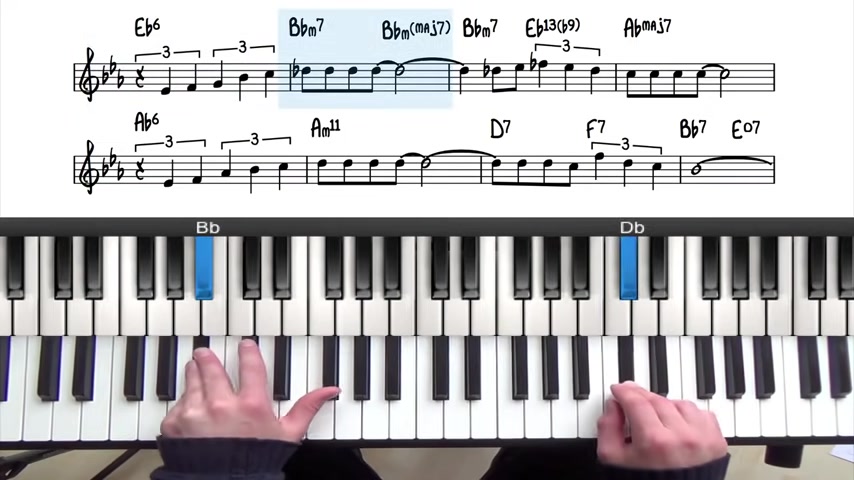
Después la pegaremos con la otra plancha de cartón de cincuenta por cincuenta .
De esta manera tiene que quedar bien centrado .
Ahora forramos con papel treinta y dos de las piezas cuadradas que cortamos antes .
Aplicaremos pegamento y lo pegaremos con cuidado de que no queden arrugas .
Tiene que quedara así .
Una vez forradas tenemos que tener treinta y dos cuadrados claros y treinta y dos oscuros .
Es la hora de pegarlos al tablero .
Empezaremos con las casillas de color .
Claro .
La pondremos en la parte superior izquierda .
Después repetiremos la operación con una casilla oscura y la pegaremos a continuación , hacia la derecha .
Seguiremos pegando Casillas siempre alternando entre colores de esta manera hasta completar el tablero .
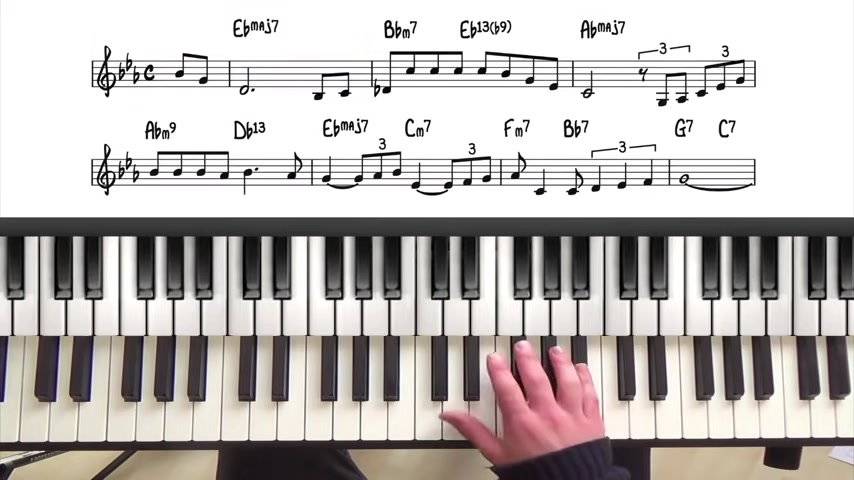
Una vez seco , ya lo tendremos listo .
Lo siguiente es hacer las piezas para nuestro ajedrez .
Para esto puedes copiar este diseño en un papel o crear el tuyo .
Lo único importante a tener en cuenta es que el rectángulo exterior no sea superior a cuatro por siete centímetros .
Usaremos la siguiente técnica para pasarlo al cartón punteamos en todos los vértices del diseño y en los contornos redondeados .
Con esto conseguiremos marcar en el cartón todos los puntos que nos indicarán por dónde trazar las líneas .
Esto lo haremos ayudándonos con una regla para que las líneas salgan bien rectas .
Lo haremos de esta manera .
Ahora dibujaremos dos círculos de cuatro centímetros de diámetro cada uno .
Estos círculos no se verán como base para las piezas cuando las hayamos recortado .
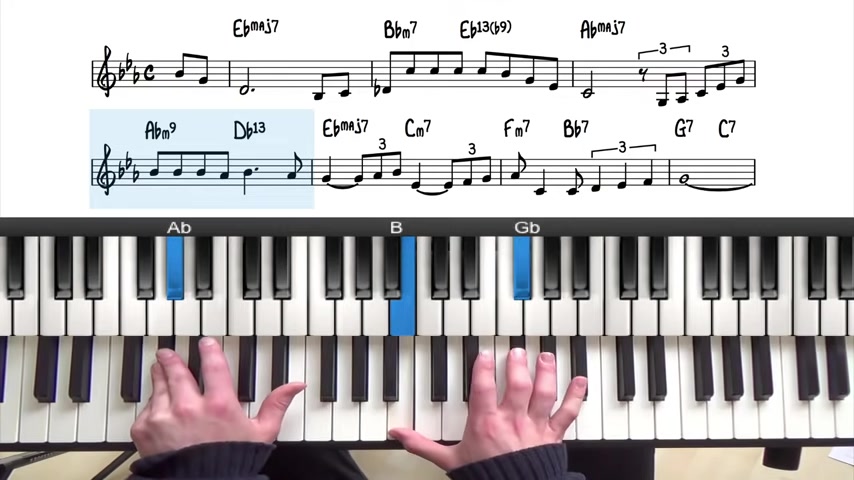
The third , the N , the seven and the nine is the melody to AD flat 13 .
So we've got the root , the flat seven , the three and the 13 .
So notice the movement .
Between them , we have a flat minor nine .
Then the seven of a flat drops by half a step to become the third of D flat 13 .
So E flat major .
Seven .
The roots , The three , the five and the seven to C minus seven .
Route seven and three to F minus seven .
So we've got the roots .
The three , the seven and the three .
So that's a B Flat seven .
We've got the root , the flat seven , the three so G7 .
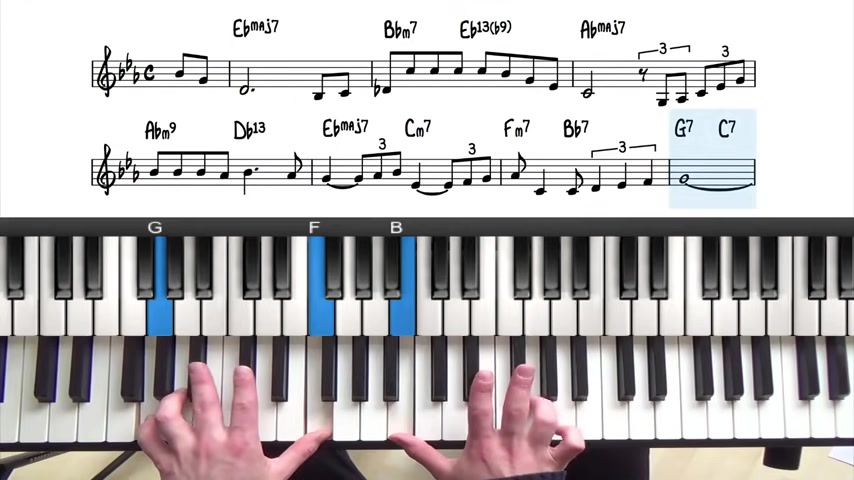
Si es así , déjalo en los comentarios poniendo r dos puntos y la respuesta que creas que es la correcta .
A continuación desvelamos la pregunta oculta del programa anterior , que se encuentra escondida en el minuto once .
Dieciseis es cuántas tiras se cortan en total de ovillo .
Y el primer comentario en dar con la respuesta correcta fue el de Cristo Blackford y gracias por participar y ahora os dejamos con algunos de los comentarios que nos parecieron más originales .
El
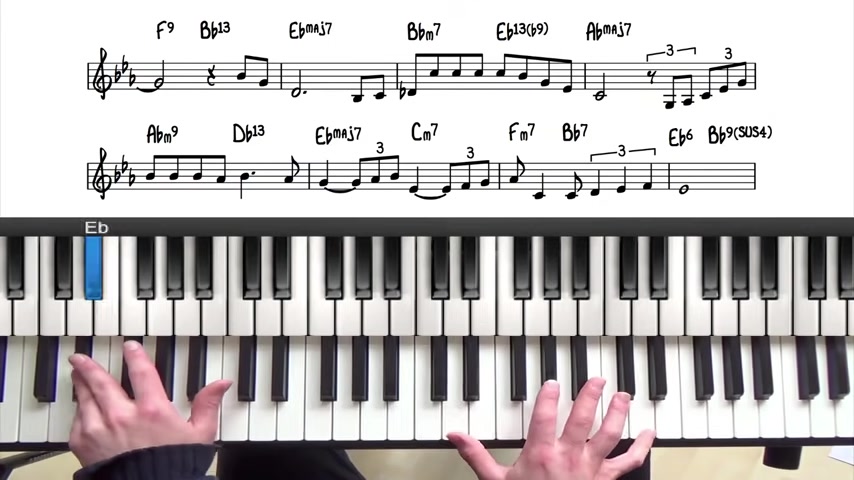
This is pretty much just , um , a complete repeat of the first one .
Let's run through it again .
E Flat Major seven B flat minor .
Nine to E flat 13 to a flat major seven a flat minor .
Nine .
It's AD flat 13 E flat , major seven to C minus seven .
F minus seven .
And then we have an E flat six cord .
So you play that like this ?
We have the the roots , the third , the six and the root is the melody .
So E flat six would be similar to E Flat seven .
It's still dominant , but we've replaced the seven with the six and then we have a B flat nine sauce .

So the easiest way to play chords is to play the root of the chords and then play a major triad a whole step below the root .
So that gives us the route the flat seven , the nine hence the B flat nine S and then the fourth , which is in the place of the third .
So that's a a functioning , dominant chord .
And then we're back to E flat six , and then we move upwards and we're into the bridge .
And now let's take a look at the bridge of the tune .
At the end of the second a section .
We have an E flat six cord , and that takes us into the bridge .
So what's going on in that line ?
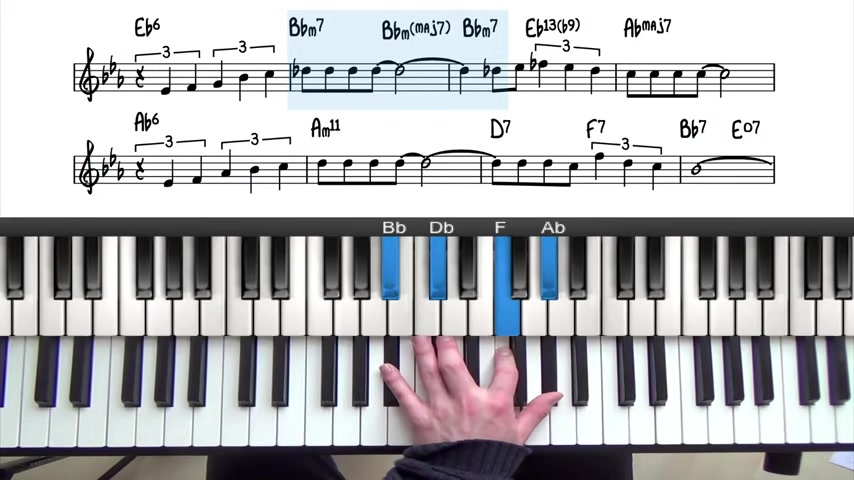
So basically , we have a B flat minus seven , and then a B flat minor major seven and then a B flat minus seven .
So that might look quite complicated , but in fact it's quite simple .
What's going on once you understand ?
Um , so a minor major chord is basically a cross between a minor and a major chord , as as the name suggests .
So here's a B flat minor seven chord to play a B flat minor major .
Seven .
We just raise the minor seventh to the major seventh .
So we have the roots , the minor third , the fifth and the major seven of them .
So it's quite a fruity sounding chord , and then the , um and then it drops back down to B flat , minus seven .
So let's see how that sounds .
Just with roots 3rd and 7th again going from the E flat six we have .
So that's basically the root , the minor seven and the minor .
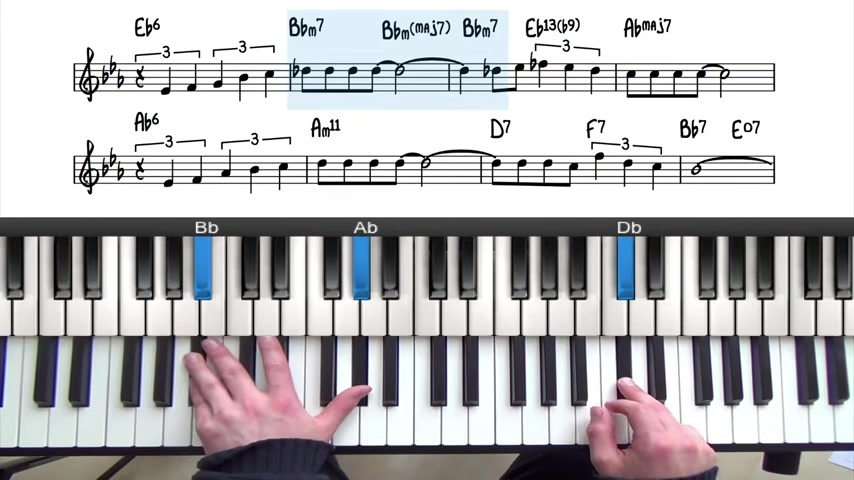
Third is the melody , so we just lift up the minus seven and raise it by half a step , and then it drops back to B flat minus seven .
So now we have an E flat seven with a flat nine so we can play .
So that's basically the root .
The third and the seventh in our left hand , and the flat nine is the melody .
So the flat nine is a very interesting sounding notes .
It's altered , so it's the ninth that's been lowered by half a step .
And so I think it's nice to draw some attention to it with , um , a grace note sort of dropping into it .
So so then it goes to a flat major seven So that's a 251 in a flat major , we've got B flat minus seven , E , flat seven and a flat .
Major seven .
Let's run through that again .
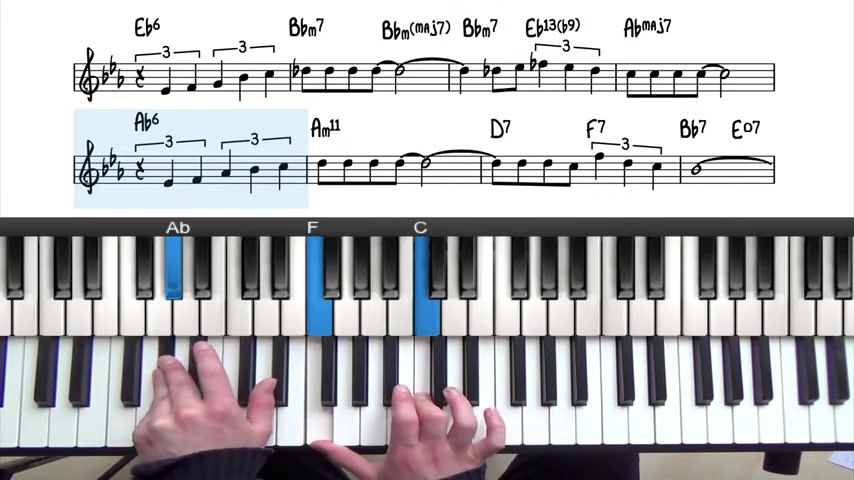
So now we have an A flat six cod .
We can play that like this .
So we've got the roots , the sixth and the third .
So that's an AM or 11 .
We've got the root .
The third , the seventh on the 11th is the melody to AD seven to F seven .
And then we have B flat seven .
Then E diminished .
So we've got the root diminished .
Third diminished seventh .
So we've got a B flat seven .
He diminished seven F minus seven .
So root 37 .
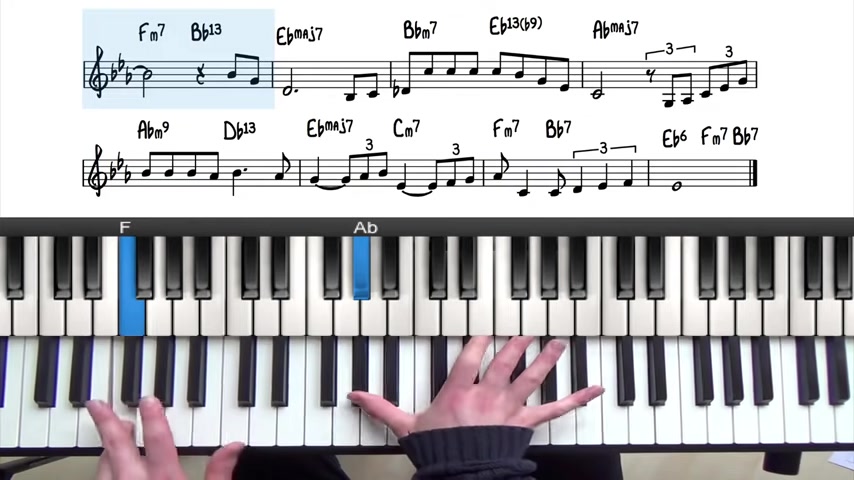
That's actually an F minor 11 because the 11 is in the melody and then we have a B flat seven , and then we're onto the third a section So just let me run through the whole of the bridge for you without talking .
So going from the E flat six cord .
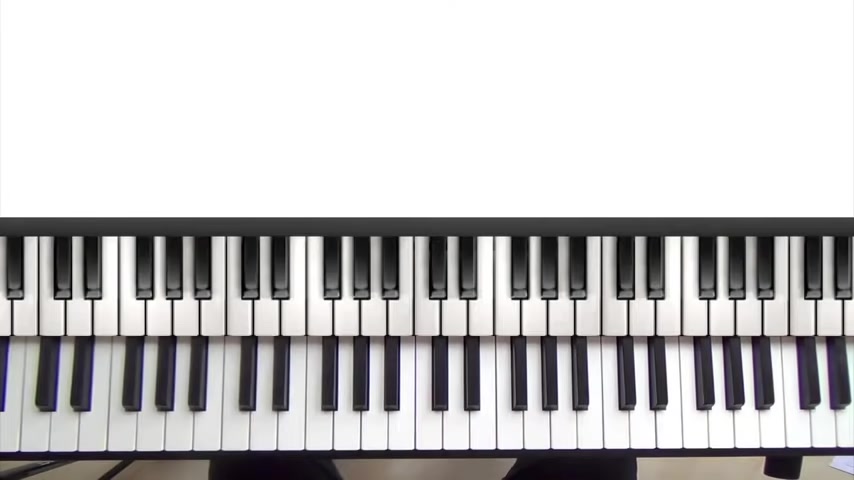
So that takes us to the third a section This is the the last a section It basically brings the tune to an end .
So now that we've been through the form adding the 3rd and 7th of the chords .
We can now look at adding more extensions , so in particular we're going to look for opportunities to add nine Elevens and thirteens .
We're also going to look at ways that we can embellish the melody to make it sound a bit more interesting .
So something I like to do here is to harmonise the pickup of the tune .
So the pickup is this bit , and that basically drops you off at E Flat major seven .
So when we harmonise something , it means that we take those two notes and we build chords underneath them .
So as we're going down to E Flat major , we could turn that into a major 251 .
So here's a That's an F minor 11 .
It's called the Kenny Barron voicing so you can go and check out the lesson on that for more info .
But you can see we've got the B flat on top .

So we've not changed the melody .
We've just harmonised underneath it .
So here we have the route The fifth , the ninth , the flat , third , the flat , seventh and the 11th of F minus .
So we could harmonise the G by playing a B flat 13 chord .
So we've got the root , the fifth , the flat seven , the third and the 13 .
And then we can play an E flat major 13 chord .
So we've got the route The fifth , the ninth , the third , the 13th and the major Seventh is the melody .
So we could actually change the melody there slightly as we go up to the top .
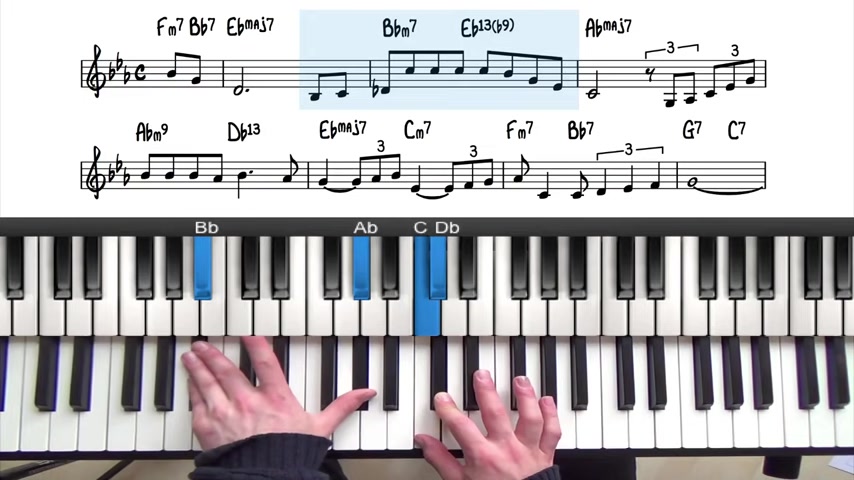
So we have I mean , you can play a B flat minor nine there .
So we've got the roots in the seventh and the nine on the minor third .
So you can see we do play the C in the previous bar .
So , you know , just putting it into that cord is fine , so you can see .
Then I took the melody up , which is OK .
You could also bring it down .
So it's just a way of adding a bit of interest instead of playing No .
Four straight notes .
So FM or 11 B flat 13 and E flat major seven B flat , minor , nine .
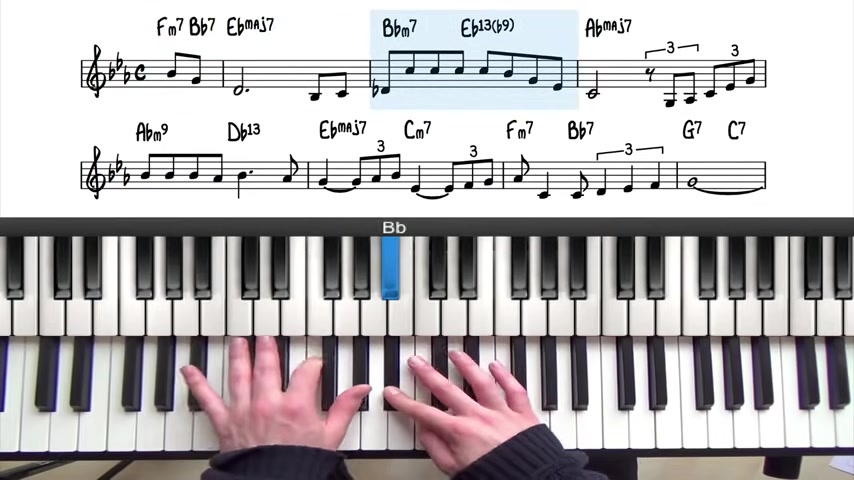
So we've got the fifth in there as well to E flat 13 .
So here I just played the the roots and then came up to play the major seventh and the ninth .
So that's an a flat minor nine voicing .
We've got the root , the fifth , the seventh , the third , the fifth , the seventh again and the ninth .
So that's AD flat 13 with the nine in there as well .
So the the fifth of a flat minor nine actually becomes the ninth of D flat 13 .
So you don't need to change the notes .
So where were we ?
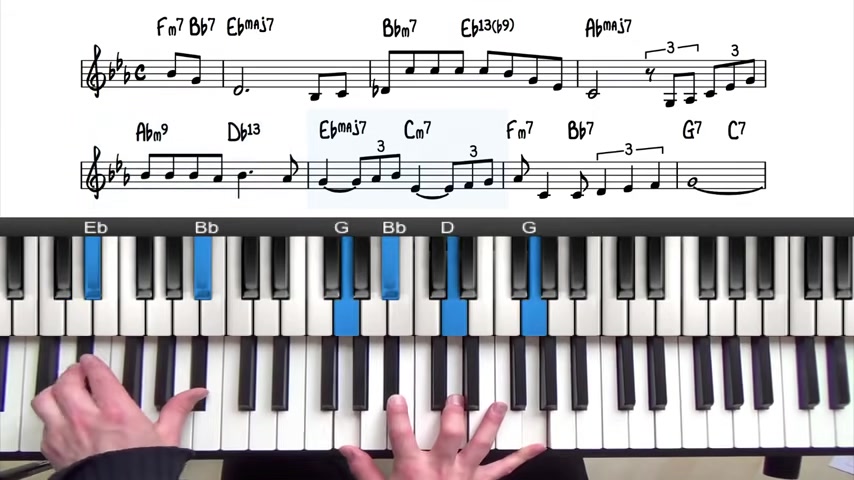
Uh , so there we've just got , um What is that ?
That's an E flat major .
Seven .
We've got the root and the fifth , the third , the fifth , the seventh and the third again .
Just a bit of a thicker cord .
We could harmonise these next two notes as well .
So ?
So all we've done there is .
We , um we basically moved up .
Diatonic .
So we we have E flat , major seven .
And then the melody moves up to a flat so we can play , Uh , an F minor F minor seven chord .
So we got the roots , the 357 and the three .
And then the melody moves up to G so we can play a G minus seven chord .
So we got the route .
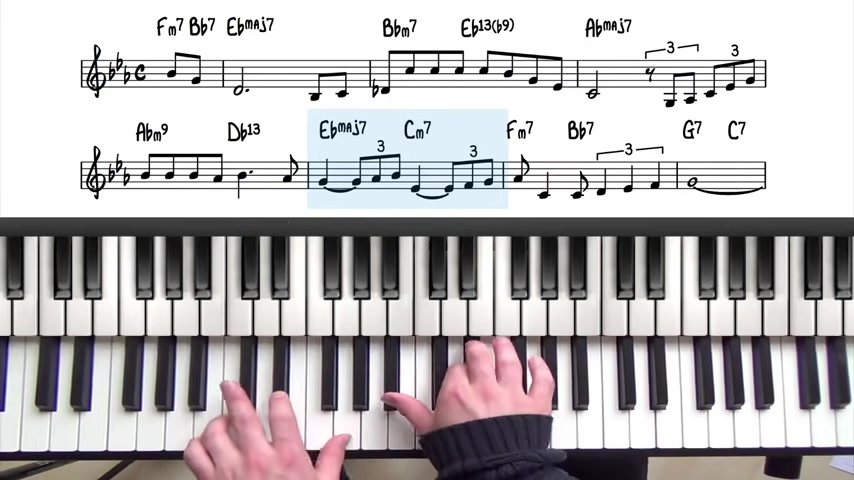
The third , the minor third , the fifth , minor , seventh and the third again .
So that that passage is and that goes to AC minor nine .
So we've got the route 3rd , 5th , 7th and the ninth and the third in there .
So it creates a bit of dissonance and tension , and then we go up to an F minus nine there .
So we've added the nine in .
So here you can play the C and the D together , and we can actually move the the sort of , um , outside of the of of this little cluster here , so to get to G7 , which is quite a nice touch .
So let's just run through all that again .

So there we've got a G7 and we can keep this bit simple .
So C seven F seven B flat seven .
So here I just sort of , uh , hit the root in the fifth and then played the third , the fifth and the 13th .
So again , just adding a few notes in So that's an a flat minor 11 corner .
So last time we played , we doubled the fist .
Well , if we drop the fifth in our right hand down a whole step that turns to an a minor 11 .
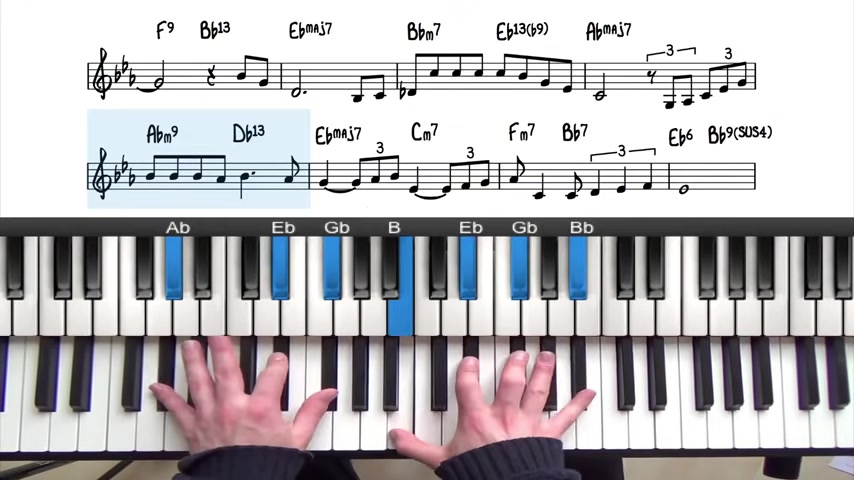
Sorry , an A flat minor 11 .
Not an a minor .
So a flat minor 11 .
That 11 really sort of add some colour to it so you can hear the difference to D Flat 13 .
So now let's have a look at the B section .
Um I mean , first of all , we've got the the E flat six .
We could change this that B flat nine sus into a B flat 13 .
So , B flat 13 .
So is basically you , add You play a major seventh a whole step below the root .
So last time we just played the the Major Triad .
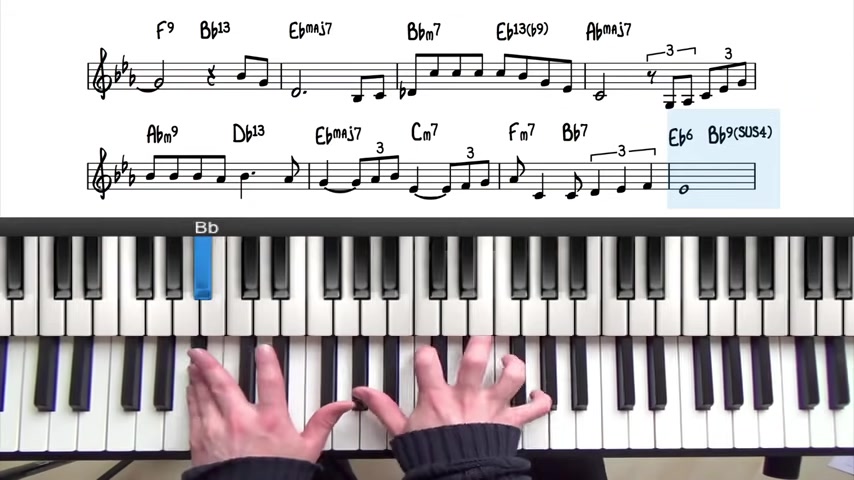
If you play a major seventh , that also gives us the 13th of B flat .
It's a bit of a richer sound and then we go back down to E flat six .
So what did I do there ?
Basically , I played the E flat six and then I hit the root of the chord .
I played a left hand , rootless , voicing and then just raised the the , uh , major seventh .
Sorry , the minor seventh up to the major seventh .
And then I played a rootless voicing with the flat nine in there .
So we've got the 3rd , 7th and the flat nine .
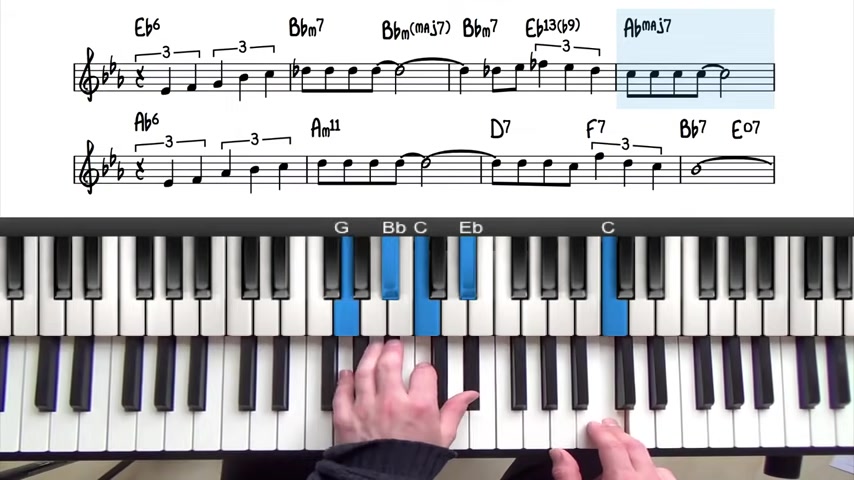
We can continue to play sort of the roots and then , uh , the rootless voicing .
So that's a rootless voicing for a flat major seven .
We've got the major seventh , the ninth , the third and the fifth .
So here we can play the Kenny Barron voicing again .
So remember the Kenny Barron voicing it has the 11th on top .
So that'll work .
Well , whenever you , uh , have a chord with the 11th and the melody .
So here we've got the route Fifth and Flat Seventh and we've got the ninth and the third , the 13th .
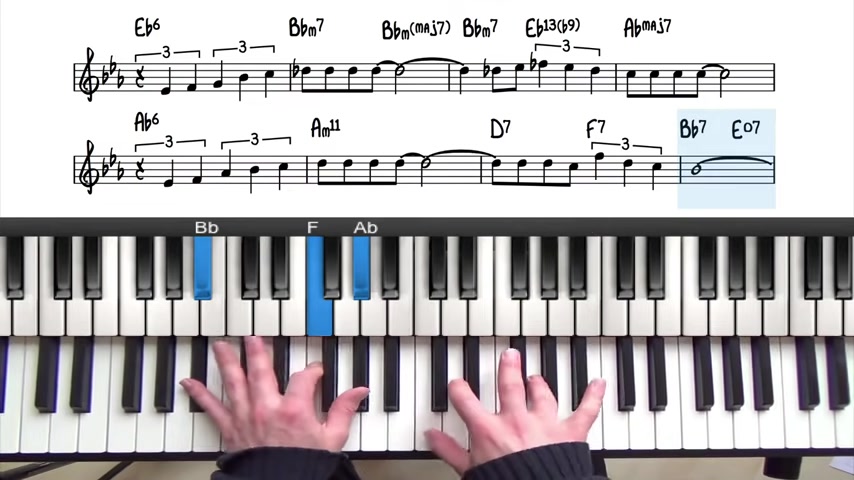
And the roo hunts up down to E diminished seven .
So we got the root , the diminished third diminished Fifth diminished seventh and the route again .
And then we can play F .
Kenny Barron could even at the at the nine in the to be flat 13 and then back to E flat major .
So that's just an F minor voicing .
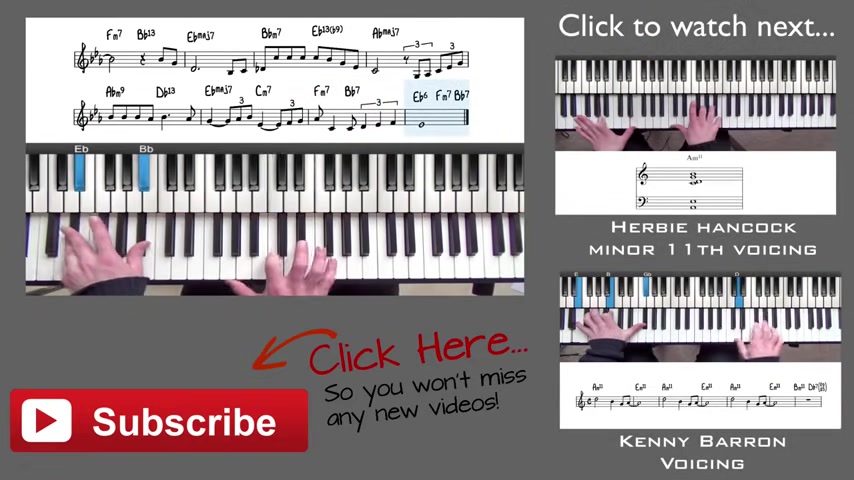
And that's the end of the So If you have any questions with that stuff , guys , just feel free to drop it in the comment box below
Are you looking for a way to reach a wider audience and get more views on your videos?
Our innovative video to text transcribing service can help you do just that.
We provide accurate transcriptions of your videos along with visual content that will help you attract new viewers and keep them engaged. Plus, our data analytics and ad campaign tools can help you monetize your content and maximize your revenue.
Let's partner up and take your video content to the next level!
Contact us today to learn more.